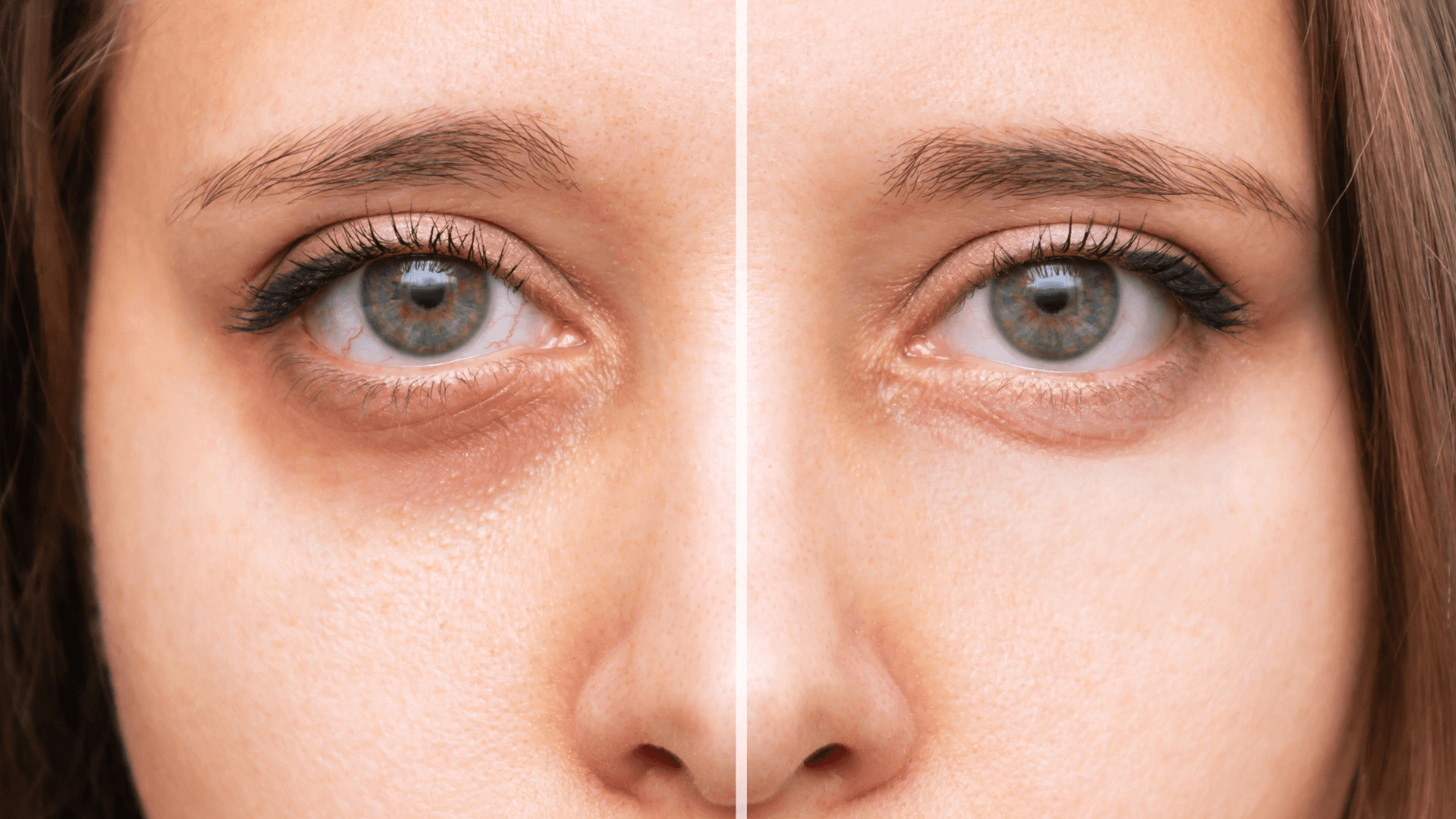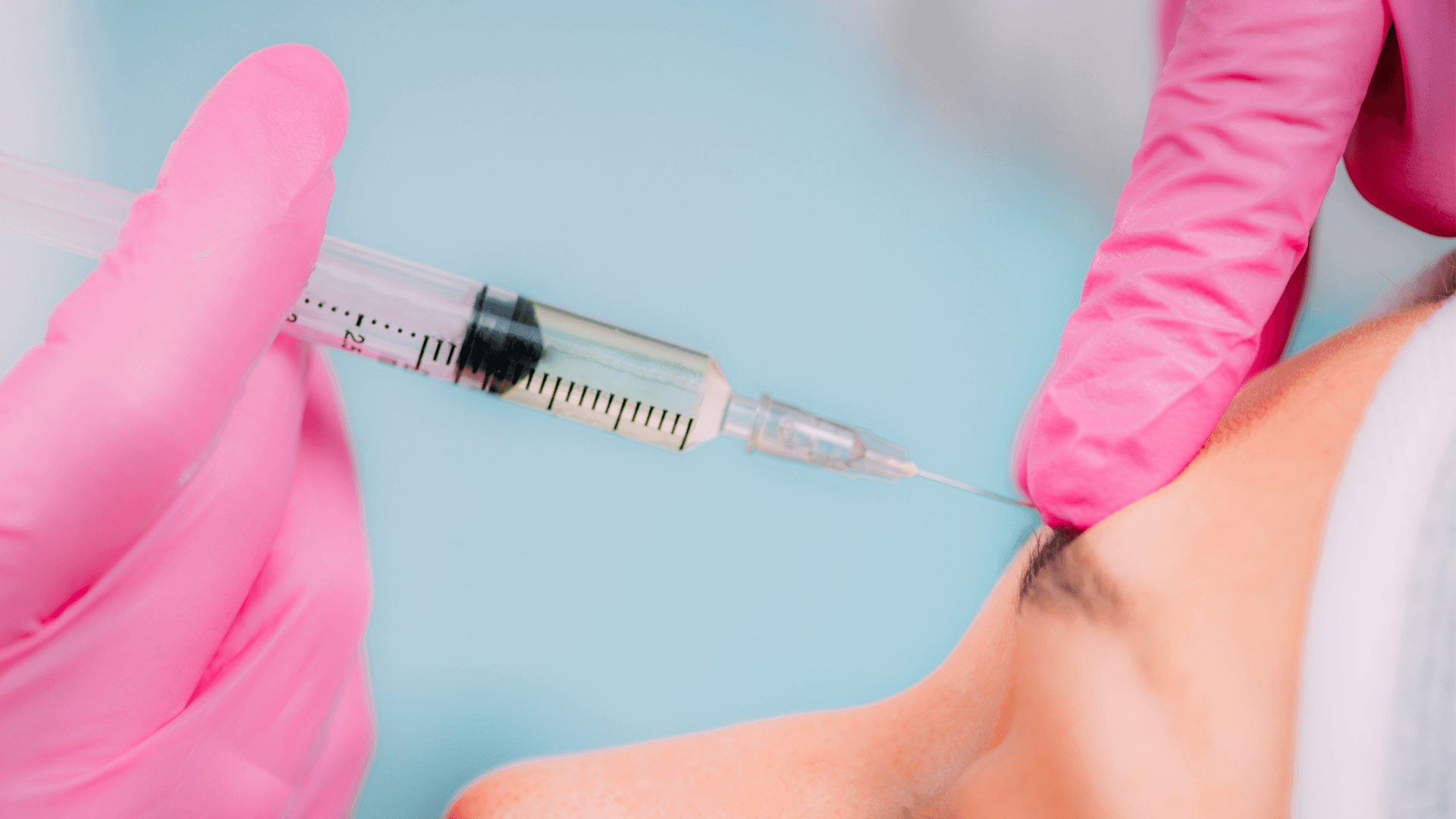Medical Tourism Blog
Hip Dip Filler in Korea | Best Clinics, Costs, Procedure Types & More

Table of contents
- What Is Hip Dip Filler?
- Best Hip Dip Filler Clinics in Korea
- Hip Dip Filler in Korea
- Cost of Hip Dip Filler in Korea
- Alternatives to Hip Dip Filler
- Conclusion
Imagine achieving the smooth, curvy hip silhouette you've always desired without going under the knife. In Korea, the rise of hip dip filler treatments is transforming the landscape of non-surgical body contouring, offering an innovative solution to minimize the natural indentations known as hip dips. Known for its prowess in advanced aesthetic procedures, Korea has become a global hub for those seeking efficient, expert, and affordable cosmetic enhancements. This article delves into the essentials of hip dip fillers, explores why Korea is at the forefront of this trend, and navigates through the potential costs and alternative options available.
Hip dip filler treatments have gained significant popularity in Korea as a non-surgical approach to achieving smooth, curvy hips and minimizing concave depressions known as hip dips. This article explores the essential aspects of this procedure, starting with an explanation of what hip dip filler is and how it works. We delve into why Korea has become a hub for this cosmetic innovation, spotlighting the country's advanced aesthetic technologies and expertise. Furthermore, readers will gain insights into the cost of undergoing hip dip filler treatment in Korea, which is often more affordable compared to other regions. Lastly, we discuss alternative methods to address hip dips, weighing their benefits and considerations to help individuals make informed choices about their body enhancement journey.

What Is Hip Dip Filler?
Hip dip filler is a non-surgical cosmetic procedure designed to smooth out the natural indentations on the sides of the hips, commonly referred to as "hip dips." These dips occur where the hip bone meets the thigh bone, leading to a concave rather than a smooth convex appearance when viewed from the side. While hip dips are completely natural and common, some individuals may seek to reduce their prominence to achieve a more contoured silhouette.
Korea has become a hub for innovative aesthetic treatments, and hip dip filler is among the popular procedures offered there. Known for its advanced cosmetic industry, Korea provides cutting-edge techniques and highly trained professionals to help individuals achieve their desired body contour.
Who Is Hip Dip Filler For?
Hip dip filler is ideal for individuals who are dissatisfied with the appearance of their hips due to noticeable indentations. This procedure is suitable for people seeking a less invasive alternative to surgical methods, such as fat grafting or implants, to enhance their hip contour. It is particularly appealing to those who want a quick procedure with minimal downtime and without the risks that accompany surgery.
Candidates for hip dip filler typically include:
- Individuals with moderate to pronounced hip dips who desire a smoother, more seamless hip line.
- Those looking for a non-permanent solution, as fillers generally provide temporary results that may last from several months to a couple of years, depending on the type of filler used.
- Patients seeking to avoid the recovery period and potential complications associated with surgical interventions.
Types of Hip Dip Filler Procedures
There are several types of fillers that may be used in this procedure, each with its unique properties and benefits. Common fillers include hyaluronic acid-based fillers and calcium hydroxylapatite fillers, both of which are used for their safety and effectiveness in body contouring.
1. Hyaluronic Acid Fillers
Hyaluronic acid (HA) fillers are the most common type used for hip dip correction. HA is a naturally occurring substance in the body that attracts and retains moisture, making it ideal for adding volume and smoothing contours. The effects of HA fillers can typically last from six months to a year, depending on the product and the individual’s metabolism.
Advantages include:
- Lower risk of allergic reactions since HA is biocompatible.
- Immediate visible results with minimal downtime.
- The procedure can be adjusted or reversed if necessary.
2. Calcium Hydroxylapatite Fillers
This type of filler is known for providing a more durable result, as it stimulates collagen production at the treatment site. Calcium hydroxylapatite (CaHA) fillers are usually used for deeper facial wrinkles but have gained popularity for body contouring applications in recent years.
Benefits include:
- Results that can last up to 12 to 18 months.
- Natural-looking enhancement due to collagen stimulation.
- A relatively low likelihood of side effects when performed by skilled practitioners.
The Procedure
The hip dip filler procedure is relatively straightforward and quick, usually taking around 30 to 60 minutes. The treatment area is first numbed with a topical anesthetic to minimize discomfort. The chosen filler is then injected into specific points along the hip dip using a fine needle or cannula.
The doctor will typically massage the area gently to ensure the filler is evenly distributed, creating a smooth, rounded contour. Patients can usually return to their regular activities shortly after the procedure, with minor bruising or swelling at the injection sites as the most common side effect.
Hip dip filler provides a customizable approach to body contouring, allowing patients to achieve their desired look with precise control over the degree of correction. However, like all cosmetic procedures, it is vital to consult with a qualified medical professional to ensure safety and optimal results.
Best Hip Dip Filler Clinics in Korea
Listed below are the best clinics in Korea:
| Clinic Name | Key Features | Special Techniques |
|---|---|---|
| Okay Plastic Surgery Clinic | Transformative approach, individualized treatment, renowned female plastic surgeon | Advanced body contouring, comprehensive breast augmentation, precision hairline correction, facial rejuvenation, specialized eye plastic surgery, comprehensive rhinoplasty, scar management |
| Modelo Clinic | Personalized beauty enhancement, focus on inherent beauty, tailored to Asian skin | Specialized Botox treatments, Fullface Filler, Baby Filler, Lifting and Whitening, Comfort Thermage, Thread Lifting, Bodytoxin treatment |
Okay Plastic Surgery Clinic
At Okay Plastic Surgery Clinic, we pride ourselves on offering a transformative approach to aesthetic care that transcends traditional procedures. Our philosophy is deeply rooted in sincerity, precision, and individualized treatment, ensuring that each patient receives a solution tailored to their unique needs and aspirations. Our clinic is led by a team of specialized professionals, including a renowned female plastic surgeon with extensive experience, who guide patients through a comprehensive journey of personal transformation. This journey is marked by expertise, empathy, and the use of cutting-edge medical techniques, ensuring that every patient feels supported and understood throughout their experience.
Our clinic provides an extensive range of specialized aesthetic services, meticulously designed to address diverse patient needs. From advanced body contouring techniques such as liposuction and fat grafting to comprehensive breast augmentation solutions and precision hairline correction, we cater to a wide array of aesthetic desires. Our offerings also include advanced facial rejuvenation and skin tightening solutions, specialized eye plastic surgery, comprehensive rhinoplasty, and innovative treatments for scar management and specialized skin concerns. At Okay Plastic Surgery Clinic, we are committed to helping our patients achieve their aesthetic goals with the highest standards of care and professionalism.
You can check out their website here: Okay Plastic Surgery Clinic Website

Modelo clinic
Modelo Clinic in Korea stands out as a beacon of personalized beauty enhancement, focusing on the unique attributes of each individual rather than following fleeting trends. At Modelo, the emphasis is on maximizing one's inherent beauty over time, ensuring that each treatment aligns with the patient's personal values and aesthetic goals. This philosophy is evident in their diverse range of procedures, which are meticulously designed to cater to the specific needs of Asian skin and facial structures. Whether it's through their specialized Botox treatments, such as Wrinkle Botox for a smoother appearance or Contour Botox for a more defined facial structure, Modelo Clinic ensures natural-looking results that enhance the patient's natural beauty.
In addition to Botox, Modelo Clinic offers a variety of filler treatments, including the Fullface Filler, which volumizes areas like the cheeks and lips for a youthful look, and the Baby Filler, which targets the under-eye area to reduce dark circles and create a refreshed appearance. Their skin treatments, such as Lifting and Whitening, are tailored to address individual aging concerns and improve skin clarity. Furthermore, innovative procedures like Comfort Thermage and Thread Lifting provide non-invasive options for skin tightening and rejuvenation. For those seeking body contouring, the Bodytoxin treatment effectively targets excess fat and cellulite. At Modelo Clinic, each procedure is a step towards achieving a harmonious balance between one's inner values and outer beauty.
Find more about this clinic here: Modelo clinic Website
Hip Dip Filler in Korea
Hip dip fillers have become an increasingly popular cosmetic procedure for individuals looking to achieve a smoother and more contoured hip line. In Korea, known for its advanced cosmetic surgery industry and high standards of medical care, this procedure is readily available and often sought after.
What are Hip Dips?
Hip dips, also known as "violin hips," refer to the inward curves found just below the hip bone and above the thighs. This natural indentation can be more pronounced in some individuals due to their bone structure, fat distribution, and muscle mass. While completely natural, some people seek to diminish these curves for a smoother, hourglass figure.
The Procedure
Hip dip filler procedures in Korea involve injecting dermal fillers, often hyaluronic acid-based, such as Juvederm or Restylane, into the indented areas of the hip to add volume and create a smoother contour. The process begins with a consultation, where a qualified practitioner assesses the individual's body to determine the best treatment plan.
Initial Consultation
During the initial consultation, patients discuss their aesthetic goals, health history, and any concerns they may have. The practitioner examines the hip area to understand the natural structure and tailors the procedure to ensure results that look natural and blend seamlessly with the patient's body. Measurements and photographs may be taken for planning and comparison.
Preparation
Once the plan is agreed upon, the practitioner explains the process in detail, including potential risks and the expected recovery period. On the day of the procedure, patients are advised to wear comfortable clothing and ensure they have arranged for transportation, as it is often recommended not to drive immediately after the injection.
Injection Process
The procedure typically takes about an hour and begins with cleansing the target area and applying a local anesthetic to minimize discomfort. The dermatologist or cosmetic surgeon strategically injects the filler into the selected areas, using a fine needle or cannula to ensure precision and minimize trauma to the skin. Patients may feel slight pressure or pinching but the process is generally not painful.
Recovery and Aftercare
Post-procedure, patients might experience mild swelling, bruising, or tenderness around the injection site. These side effects usually subside within a few days. Practitioners provide specific aftercare instructions, which often include avoiding strenuous activity and extreme temperatures for a designated period. Follow-up appointments are usually scheduled to monitor results and make adjustments if necessary.
Advantages of Getting Hip Dips Filler in Korea
Korea is internationally recognized for its focus on beauty and cosmetic enhancements. Opting to undergo a hip dip filler procedure in Korea offers several benefits:
- Advanced Techniques: Korean cosmetic clinics often use cutting-edge techniques and technology to administer fillers, ensuring precise and aesthetically pleasing results.
- Highly Skilled Practitioners: The country is home to world-class dermatologists and plastic surgeons who specialize in minimally invasive procedures and have substantial experience with Asian and diverse body types.
- Comprehensive Aftercare: Korean clinics traditionally offer thorough post-procedure care, with practitioners closely monitoring patient progress to ensure optimal outcomes.
- Cost-Effectiveness: Despite its advanced medical landscape, Korea offers relatively competitive pricing for cosmetic procedures, making it an attractive destination for international patients seeking quality and value.
Patients considering hip dip fillers in Korea can expect a professional and meticulous approach to enhancing their natural physique, resulting in a more harmonious silhouette.
Cost of Hip Dip Filler in Korea
When considering hip dip filler treatments in Korea, the cost can vary significantly depending on several factors, including the clinic's reputation, the experience of the physician, and the specific type of filler used. Generally, Korea offers competitive pricing for cosmetic procedures, making it an attractive destination for many international patients.
Hip Dip Filler Price Range
In Korea, the cost for hip dip filler treatments can range from approximately $2,000 to $5,000 USD. This price can fluctuate based on the complexity of the procedure, the specific product used, and the number of sessions required to achieve the desired results. Some high-end clinics in prime locations, like Gangnam in Seoul, may charge more due to their premium services and advanced technology.
Additional Costs
-
Consultation Fees: Some clinics charge separately for initial consultations, which may cost between $50 to $150 USD. However, many establishments offer free consultations as part of their service package to international patients.
-
Pre- and Post-Procedural Care: Costs for any additional pre-procedure tests or post-procedure care, such as follow-up visits or specific aftercare products, should also be considered. These may range from $100 to $300 USD.
Travel Expenses to Korea
-
Flight Costs: The cost of flying to Korea varies greatly depending on the season, airline, and departure city. On average, round-trip flights from the United States might range from $700 to $1,500 USD. Flying from Europe could also fall within a similar price range.
-
Accommodation: Staying in Korea can vary from budget options like hostels or guesthouses at $30 to $80 USD per night to luxury hotels costing $150 to $400 USD per night.
-
Local Transportation: Efficient public transport systems in Korea, including subways and buses, can cost as little as $1 to $2 USD per ride. Alternatively, taxis are available but slightly more expensive, averaging $10 to $30 USD for moderate distances within city limits.
-
Daily Expenses: Daily expenses, including meals, shopping, and sightseeing, could sum up to around $50 to $100 USD per day, depending on personal preferences and lifestyle.
Patients considering hip dip filler treatments in Korea should carefully calculate the total expected costs, including both the procedure and travel expenses, to make an informed decision tailored to their budget.
Alternatives to Hip Dip Filler
While hip dip fillers have gained popularity for their ability to smooth out hip contours, several alternatives can achieve similar aesthetic goals. These options vary in terms of invasiveness, recovery time, and the extent of results. Here are three recommended alternatives:
1. Fat Grafting (Fat Transfer)
Fat grafting, also known as fat transfer, is a surgical procedure that involves harvesting fat from one area of the body—commonly the abdomen, thighs, or flanks—and injecting it into the hip dip region. This technique not only enhances the hip shape but also utilizes natural body fat, reducing the risk of allergic reactions or rejection.
Advantages:
- Natural Feel and Look: As it uses the patient's own fat, the results tend to feel and appear more natural.
- Dual Benefits: Patients benefit from fat removal in areas where it is unwanted, alongside hip enhancement.
- Long-lasting Results: While some fat may be reabsorbed by the body, the longevity of the results is generally significant.
Considerations:
- Surgical Procedure: Requires anesthesia and involves more recovery time compared to non-surgical methods.
- Variable Results: Success largely depends on the surgeon’s technique and the body’s acceptance of the transferred fat.
2. Sculptra Injections
Sculptra is a poly-L-lactic acid-based injectable that stimulates the body’s natural collagen production to gradually enhance the volume of treated areas. Though typically used for facial rejuvenation, it has been employed for body contouring purposes, including hip dips.
Advantages:
- Non-surgical: Requires only a series of injections without the need for anesthesia or significant downtime.
- Progressive Results: Enhancements occur gradually over several sessions, providing a subtle, natural-looking progression.
- Maintenance of Results: With periodic touch-ups, results can last up to two years.
Considerations:
- Multiple Sessions Required: Optimal outcomes require several treatment sessions, spaced weeks apart.
- Delayed Gratification: Results unfold over months as collagen production ramps up.
3. CoolSculpting
CoolSculpting is a non-invasive fat reduction technique that uses controlled cooling to target and kill fat cells. Although it is traditionally used for fat removal, strategic application around the hip and waist area can help improve the appearance of hip dips by subtly contouring and redefining the surrounding areas.
Advantages:
- Non-invasive: No surgery, needles, or downtime required, allowing return to regular activities almost immediately.
- Precision Targeting: Effectively targets localized fat deposits.
- Long-term Fat Reduction: Once fat cells are frozen, they are naturally eliminated from the body for good.
Considerations:
- Limited Volume Change: Best suited for subtle contouring; it may not provide as dramatic an effect as filler or fat transfer.
- Results Vary: Optimal candidates are those with pinchable fat, and results can take several months to become noticeable.
Each of these alternatives carries different benefits and considerations, making it important for individuals to consult with a qualified medical professional to determine the best course of action based on their specific needs and goals.
Conclusion
In conclusion, the landscape of cosmetic enhancements in Korea is diverse and cutting-edge, with hip dip filler emerging as a popular choice for individuals seeking to alter the contours of their hips for a smoother silhouette. While the procedure offers a non-surgical method to address hip dips quickly and effectively, it is essential for potential candidates to consider their options carefully, weighing the costs involved against their desired outcomes. Moreover, with a variety of alternatives available, including surgical procedures and targeted exercise regimens, individuals have the flexibility to choose a method that aligns best with their personal goals and lifestyle. As with any cosmetic procedure, consulting with experienced professionals and conducting thorough research is crucial to ensure safe and satisfactory results.








